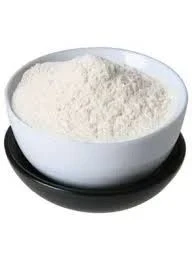
10月 . 11, 2024 13:08 Back to list
Exploring Innovative Additives for Enhanced Cement Adhesive Performance and Durability
The Importance of Cement Adhesive Additives in Modern Construction
In the rapidly evolving world of construction, cement serves as one of the most critical materials. Used in everything from residential homes to monumental skyscrapers, its properties play a vital role in the durability and strength of structures. However, unmodified cement often lacks certain essential qualities needed for various applications. This is where cement adhesive additives come into play, transforming traditional cement into a more versatile and robust product that meets modern engineering demands.
Understanding Cement Adhesive Additives
Cement adhesive additives are chemical agents or materials mixed into cement formulations to enhance their performance. These additives can significantly affect the physical and chemical properties of cement, improving factors such as workability, adhesion, and setting times. Some common types of adhesives used include polymer-based additives, latex emulsions, and specific chemical agents designed to enhance properties like water retention and bonding strength.
The Role of Additives in Cement Performance
1. Enhanced Adhesion One of the primary functions of cement adhesive additives is to improve the adhesion of the cement to various surfaces. In applications such as tiling and plastering, where the cement must bond firmly to different substrates, these additives ensure a strong and lasting hold. This is particularly crucial in environments subjected to thermal expansion and contraction, where a weak bond could lead to cracking and delamination.
2. Improved Workability Cement can be notoriously difficult to work with without proper additives. By incorporating specific chemical agents, manufacturers can achieve better fluidity and workability, allowing easier application. This is especially advantageous in large-scale construction projects where time and efficiency are of the essence. Improved workability also means that workers can achieve a smoother finish with less effort, reducing labor costs.
cement adhesive additive

3. Water Resistance Many construction projects require materials that can withstand exposure to moisture, particularly projects in humid climates or aquatic environments. Cement adhesive additives can impart water-resistant properties, preventing water infiltration and minimizing the risk of efflorescence and mold growth. This makes them essential for applications in bathroom tiles, swimming pools, and external facades.
4. Reduced Cracking One of the significant challenges in cement-based applications is cracking due to shrinkage or temperature fluctuations. Adhesive additives can help mitigate these issues by promoting better cohesion within the cement matrix. This reduces the likelihood of cracks forming during the curing process or after the structure is complete. Incorporating crack-resistant additives can lead to longer-lasting surfaces and reduced maintenance costs over time.
5. Faster Curing Times Many modern construction projects are time-sensitive, requiring materials that set and cure quickly. Cement adhesive additives can significantly reduce the time required for cement to gain strength, allowing for faster project completion. This can be particularly beneficial in cold weather conditions, where traditional cement may struggle to attain the desired strength.
Environmental Considerations
In addition to enhancing performance, many manufacturers are focusing on developing eco-friendly cement adhesive additives. These alternatives are derived from renewable resources and are designed to reduce the carbon footprint of construction projects. By selecting sustainable additives, builders can contribute to environmental protection while still achieving high performance.
Conclusion
The integration of cement adhesive additives into construction materials represents a significant leap forward in the field of civil engineering. By improving adhesion, workability, water resistance, crack resistance, and curing time, these additives enhance the capabilities of traditional cement products. As construction methodologies continue to evolve, the importance of these additives cannot be overstated. They not only contribute to the longevity and durability of structures but also help meet the sustainability goals of the modern construction industry. Acknowledging their role allows builders and engineers to make informed decisions that enhance both the quality and reliability of their projects. As we advance into a future that values efficiency and sustainability, cement adhesive additives will undoubtedly continue to play a crucial role in shaping our built environment.
-
The Widespread Application of Redispersible Powder in Construction and Building Materials
NewsMay.16,2025
-
The Widespread Application of Hpmc in the Detergent Industry
NewsMay.16,2025
-
The Main Applications of Hydroxyethyl Cellulose in Paints and Coatings
NewsMay.16,2025
-
Mortar Bonding Agent: the Key to Enhancing the Adhesion Between New and Old Mortar Layers and Between Mortar and Different Substrates
NewsMay.16,2025
-
HPMC: Application as a thickener and excipient
NewsMay.16,2025
-
Hec Cellulose Cellulose: Multi functional dispersants and high-efficiency thickeners
NewsMay.16,2025







